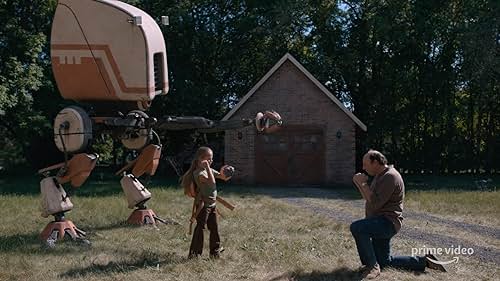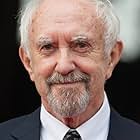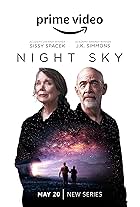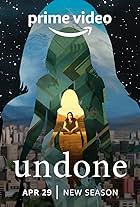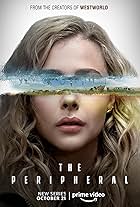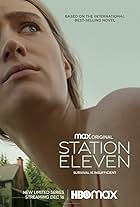The townspeople who live above "The Loop," a machine built to unlock and explore the mysteries of the universe, experience things previously consigned to the realm of science fiction.The townspeople who live above "The Loop," a machine built to unlock and explore the mysteries of the universe, experience things previously consigned to the realm of science fiction.The townspeople who live above "The Loop," a machine built to unlock and explore the mysteries of the universe, experience things previously consigned to the realm of science fiction.
- Nominated for 2 Primetime Emmys
- 10 nominations total
Browse episodes
Storyline
Did you know
- TriviaMost of the fictional technology and architecture seen in the series is based directly on the artwork from Simon Stålenhag's book. However the scripts called for a few new devices that were not seen in the book. Writer and producer Nathaniel Halpern wanted all of the new technology to match the visual aesthetic of the book, so he asked Stålenhag to consult on all of the production design. Stålenhag even designed some of the props, like George's prosthetic arm, himself.
Featured review
The retro-futuristic and immeasurably cozy paintings of Simon Stålenhag have been given life by Amazon Prime. Thanks to my dad, who obtained the Tales from the Loop artbook (org. title Ur Varselklotet) when it was brand new (he may even have donated to its crowdfunding campaign), I've had a good look into Stålenhag's dreamlike alternate past before.
My brother once referred to Stålenhag's peculiar art style as "Sweden punk", where we'll scan our eyeballs over familiar rural environments until, suddenly, some sort of technological behemoth appears. It may be a strange, defunct machine (that nevertheless looks as if Volvo or Stiga could realistically design it) next to a quaint Scandinavian meadow, or a vast spacecraft hovering over a dimly lit torp in the December twilight.
Amazon brings all of this to life with an anthology, each episode nonetheless set in the same continuity, directed by the likes of Andrew Stanton and Jodie Foster (a good choice after her work on Black Mirror) and scored in part by Philip Glass - his haunting, repetitive-but-beautiful tunes as distinctive as ever. The cast includes Jonathan Pryce and Rebecca Hall, who put it best when she said in an interview that the characters genuinely seem to inhabit a universe larger than themselves. The landscape around them clearly has history, even when it isn't expositorily stated.
On that note, the "retro" part of the retro-futurism is also in the characters, including young children who are often more astute than the adults - it shares this with Stranger Things, another nostalgic streaming-original, but I currently think Tales from the Loop is better, partly because of how farcical Things has gotten. Early on, Loretta (Abby Ryder Fortson) and Cole (Duncan Joiner) are curious of the mysteries surrounding The Loop, a scientific facility in their area that seems to dabble in the unnatural.
One of the problems I had with the series is that, possibly due to the episodic structure, certain big revelations seem to come quite early in the show's run. Let me elaborate: In the very first episode, we learn something shocking about two of the main characters, akin to one of the most existentially devastating twists in the Netflix masterpiece Dark, but since we don't yet know these people that well, it isn't as impactful as it could have been. Instead, the second episode moves on to a different (somewhat better-acted) story involving the effects of The Loop, starring a tertiary character from the prior story.
However, accepting the show and the format for what it is, 'tis certainly a charming expedition into the mind of Stålenhag. The book and the artwork are faithfully adapted (including the way the characters are cast, then costumed and groomed) by head writer and developer Nathaniel Halpern, but I gather Stålenhag himself was heavily involved (complete with an on-screen cameo). He even submitted a title card animation, pictured above, "as a suggestion" and they wound up using it.
It just warms my hollow ribcage when an artist gets to realize their vision in this manner, aided by people who demonstrably give a damn. Tales from the Loop, not unlike the Netflix series Love, Death + Robots, is one of those shows that truly prove what a safe space the streaming world is for auteurs, enabled to enrich us with something new instead of sticking to a marketable studio-imposed formula.
If shows like these become successful enough, ginormous studios may learn that providing something new and original is the way to go (people sometimes argue that recent Lucasfilm and Marvel movies do represent an artist's vision, hence their controversy compared to other "factory-made" sequels, but I remain skeptical that Disney would truly allow freedom, or deem controversy as anything other than useful PR). I will certainly do my part and tell you this much: please check out Tales from the Loop. It's a visually inventive and fun watch that touches on the "larger" life questions that sci-fi concepts ought to bring. The dialogue itself can be a bit obvious and some stories may be less intriguing than others, but no matter.
My brother once referred to Stålenhag's peculiar art style as "Sweden punk", where we'll scan our eyeballs over familiar rural environments until, suddenly, some sort of technological behemoth appears. It may be a strange, defunct machine (that nevertheless looks as if Volvo or Stiga could realistically design it) next to a quaint Scandinavian meadow, or a vast spacecraft hovering over a dimly lit torp in the December twilight.
Amazon brings all of this to life with an anthology, each episode nonetheless set in the same continuity, directed by the likes of Andrew Stanton and Jodie Foster (a good choice after her work on Black Mirror) and scored in part by Philip Glass - his haunting, repetitive-but-beautiful tunes as distinctive as ever. The cast includes Jonathan Pryce and Rebecca Hall, who put it best when she said in an interview that the characters genuinely seem to inhabit a universe larger than themselves. The landscape around them clearly has history, even when it isn't expositorily stated.
On that note, the "retro" part of the retro-futurism is also in the characters, including young children who are often more astute than the adults - it shares this with Stranger Things, another nostalgic streaming-original, but I currently think Tales from the Loop is better, partly because of how farcical Things has gotten. Early on, Loretta (Abby Ryder Fortson) and Cole (Duncan Joiner) are curious of the mysteries surrounding The Loop, a scientific facility in their area that seems to dabble in the unnatural.
One of the problems I had with the series is that, possibly due to the episodic structure, certain big revelations seem to come quite early in the show's run. Let me elaborate: In the very first episode, we learn something shocking about two of the main characters, akin to one of the most existentially devastating twists in the Netflix masterpiece Dark, but since we don't yet know these people that well, it isn't as impactful as it could have been. Instead, the second episode moves on to a different (somewhat better-acted) story involving the effects of The Loop, starring a tertiary character from the prior story.
However, accepting the show and the format for what it is, 'tis certainly a charming expedition into the mind of Stålenhag. The book and the artwork are faithfully adapted (including the way the characters are cast, then costumed and groomed) by head writer and developer Nathaniel Halpern, but I gather Stålenhag himself was heavily involved (complete with an on-screen cameo). He even submitted a title card animation, pictured above, "as a suggestion" and they wound up using it.
It just warms my hollow ribcage when an artist gets to realize their vision in this manner, aided by people who demonstrably give a damn. Tales from the Loop, not unlike the Netflix series Love, Death + Robots, is one of those shows that truly prove what a safe space the streaming world is for auteurs, enabled to enrich us with something new instead of sticking to a marketable studio-imposed formula.
If shows like these become successful enough, ginormous studios may learn that providing something new and original is the way to go (people sometimes argue that recent Lucasfilm and Marvel movies do represent an artist's vision, hence their controversy compared to other "factory-made" sequels, but I remain skeptical that Disney would truly allow freedom, or deem controversy as anything other than useful PR). I will certainly do my part and tell you this much: please check out Tales from the Loop. It's a visually inventive and fun watch that touches on the "larger" life questions that sci-fi concepts ought to bring. The dialogue itself can be a bit obvious and some stories may be less intriguing than others, but no matter.
- TheVictoriousV
- Apr 5, 2020
- Permalink
- How many seasons does Tales from the Loop have?Powered by Alexa
Details
- Runtime50 minutes
- Color
- Sound mix
- Aspect ratio
- 1.78 : 1
Contribute to this page
Suggest an edit or add missing content

